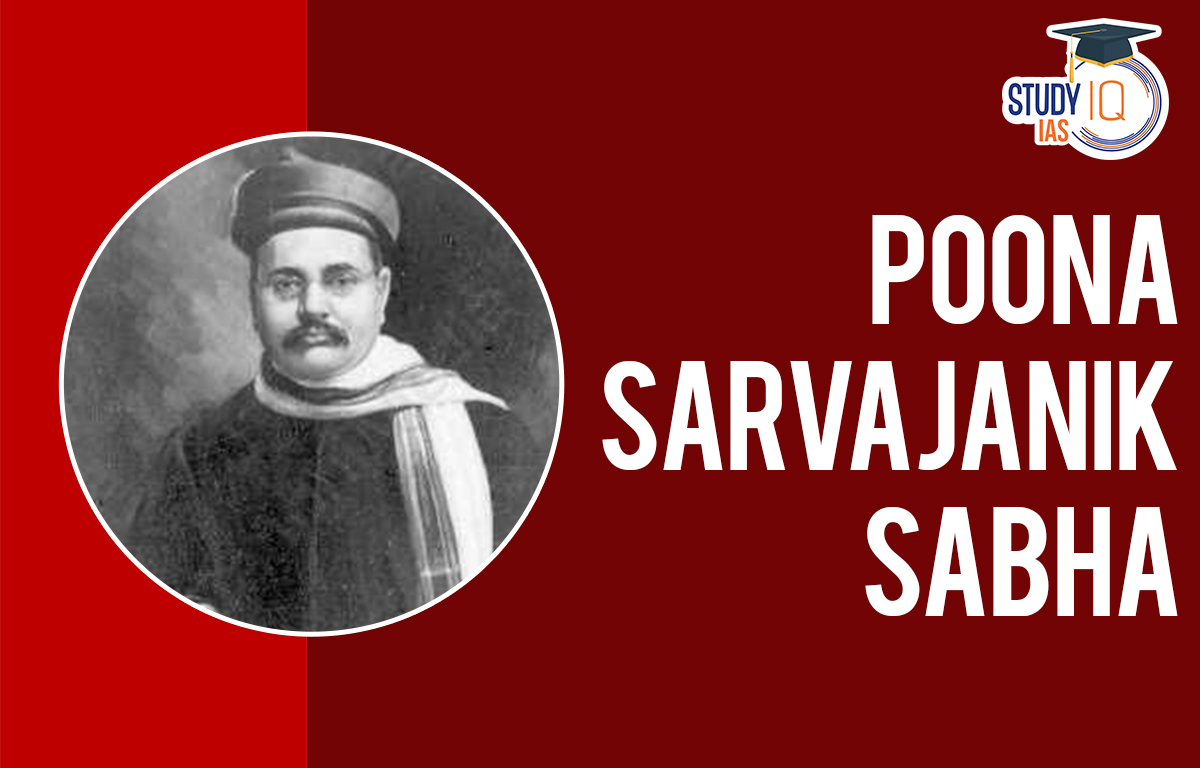Table of Contents
Poona Sarvajanik Sabha
In 1870, M.G. Ranade, G.V. Joshi, S.H. Chiplankar, and their friends founded the Poona Sarvajanik Sabha. It was a sociopolitical group in British India that served as a go-between between the Indian government and the populace to promote the legal rights of the peasantry. For those preparing for the UPSC examination, this article will cover the Poona Sarvajanik Sabha.
Read More: Khond Uprisings
Poona Sarvajanik Sabha History
On April 2, 1870, in Poona, India, the Poona Sarvajanik Sabha was established in reaction to the populace’s displeasure with the operation of a nearby temple. Both the Deccan Association (1850) and the Poona Association (1867) failed within a few years, and the western-educated residents of Poona recognised the need for a contemporary sociopolitical structure.
A dedicated social reformer from the Bombay Presidency, Mahadev Govind Ranade was a well-known lawyer and academic. He played a key role in the establishment of the Sarvajanik Sabha. Aundh State governor and the organization’s first president, Bhawanrao Shriniwasrao Pant Pratinidhi, Ganesh Vasudeo Joshi, and S. H. Chiplunkar were also significant figures in its founding.
Important Sabha members included M M Kunte, Vishnu M Bhide, Bal Gangadhar Tilak, and Gopal Hari Deshmukh. The members, mostly from the educated middle class, were lawyers, pensioners, pleaders, teachers, journalists, and government workers in the judicial and educational agencies. The Sarvajanik Sabha aimed to be a contemporary political institution that would stand in for the local populace. As a consequence, a group of 6000 people was used to select its first 95 members.
Read More: Bhil Revolt
Poona Sarvajanik Sabha Founder
Many of the well-known national figures, such as Bal Gangadhar Tilak, who contributed to the Indian freedom fight, came from the Pune Sarvajanik Sabha. Ganesh Vasudeo Joshi founded it in 1867.
Read More: Ramosi Uprising
Poona Sarvajanik Sabha Feature
In order to foster a feeling of pride in one’s country among the populace, the group organised meetings and lecture tours. In times of famine, it also coordinated relief operations. In essence, it was meant to act as a bridge between the people and the government, enabling the latter to be more in line with the former’s desires and goals. Membership was available to people of all castes and classes, even though the majority of the members came from the upper-middle class.
The Sabha advocated for rural interests before the government and voiced opposition to press, salt, and forest legislation. It released a quarterly journal in which it advocated for its viewpoints and exhorted Indians to unite in order to push for political and economic changes. The Sabha even sent Ganesh Vasudeo Joshi, a member, to the Delhi Durbar (1877) wearing hand-spun khadi as a show of support for Swadeshi.
It is important to note that khadi emerged on the political scene in India before Mahatma Gandhi turned it into a representation of Indian nationalism. The Sabha anticipated the creation of the Indian National Congress in many respects. Many Sabha participants joined the INC as well. After 1895, there was an ideological break between the sabha’s members, which caused the sabha’s duties to diminish and fragment into various groups.
Read More: Poligars Revolt
Poona Sarvajanik Sabha UPSC
When the Poona residents with western education sensed the need for a contemporary sociopolitical organization to advance their interests, the Poona Sarvajanik Sabha was born. It attempted to promote national pride among the populace by organizing meetings and lecture tours to spread its principles. Additionally, it coordinated aid efforts during the famines. For UPSC Exam preparation, read all the information related to Poona Sarvajanik Sabha.
Read More: Santhal Rebellion


 Nagari Pracharini Sabha Revival: Backgro...
Nagari Pracharini Sabha Revival: Backgro...
 Ryotwari System in India, Features, Impa...
Ryotwari System in India, Features, Impa...
 Battle of Plassey, History, Causes, Impa...
Battle of Plassey, History, Causes, Impa...





















